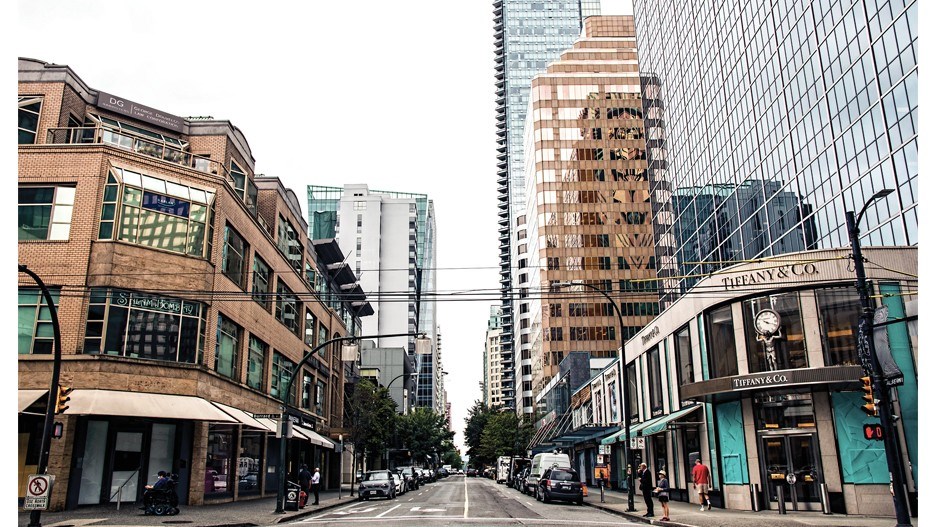The latest data shows that Metro Vancouver’s commercial real estate sector should be prepping for a full-press recovery in September, but the reality on the street paints a different and troubling scenario, according to the BC Real Estate Association (BCREA), which released second-quarter data last week.
The BCREA Commercial Leading Indicator (CLI) rose to 155 from 150 in 2021’s second quarter. That represents the fourth consecutive quarterly increase as the economy recovered from the COVID-19-induced recession.
Compared with the same time last year, the index was up by 25%.
But Brendon Ogmundson, BCREA chief economist, warns commercial real estate is facing a “very abnormal and uncertain environment.
“Normally, the type of growth we see reflected in the CLI would imply an improvement in demand for retail and office space,” Ogmundson said. “However, the complexities of the COVID-19 pandemic and related public health restrictions are driving a wedge between what we see in the data and what is being experienced on the ground.”
The arrival of a fourth wave of COVID-19 led to an August 24 return of mandatory masks in all public areas in B.C., reversing a July 1 reopening of the province.
Provincial health officer Dr. Bonnie Henry announced the reintroduction of the mask mandate, pointing to the alarmingly contagious Delta variant and the significant number of unvaccinated B.C. residents.
The fourth wave has cooled perceptions of workers returning to the office and consumers rushing to retailers for back-to-school shopping.
In early August, Colliers senior managing director Darrel Hurst was predicting that 62% of Vancouver office employees would return to the office after Labour Day.
But Ogmundson said it’s now unclear if the need for office space is as strong as predicted and added that there are also questions about the future need for retail space because shoppers are increasingly relying on online orders.
Still, the economic data at the end June looked promising. Overall manufacturing sales rose 5% in 2021’s second quarter on higher sales in the wood products, food manufacturing, and chemical products sectors.
The CLI’s economic activity component was also positively driven by a 4.8% increase in wholesale trade.
Commercial real estate investment trust unit prices approached all-time records and risk spreads between corporate and government debt continued to narrow, the BCREA found.
Employment in key commercial real estate sectors such as finance, insurance, real estate and leasing increased by about 13,800 jobs in the second quarter, and the office employment component of the index hit an all-time high.
However, Ogmundson cautioned that “the effect of this strong employment growth on the demand for office space remains unclear as many employees continue to work remotely.” •




